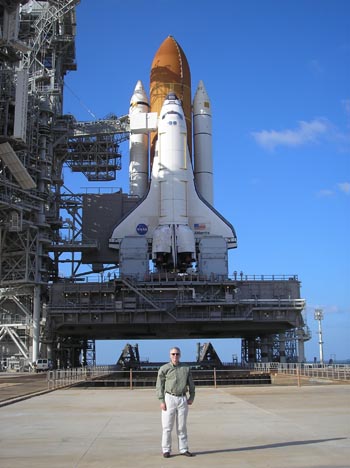CONSULTING

Laser Guidance is regularly called upon for technical assistance and expertise by a number of leading companies:
NASA
BOEING COMPANY
SPACE-X
Building a legacy of success over a range of technological project development.
 Maritime Laser Sector Light
Maritime Laser Sector Light
The Laser Sector Localizer provides a revolutionary advancement in maritime navigational safety and long-range visual guidance. It allows pilots to quickly and easily identify harbors and safe navigational channels. The brilliance and conspicuous nature of the lasers can be easily recognized with coastal and city lights in the background.
The Laser Sector Localizer is a multi-purpose visual aid to navigation that can be utilized at harbor entrances, on narrow channels and waterways, as well as on offshore platforms. It provides positive early alignment in low visibility weather conditions, emergency directions to vessels in the event of power failures or disasters, simplified approaches to final destinations and low operating costs.
The Laser Sector Localizer is a state-of-the-art laser based visual navigational system utilizing a patented laser technology that, through the use of color and flash sequence, allows the pilot to maintain a precise approach path while navigating a vessel to its final destination. It requires no equipment on board the vessel.
 Propulsion Systems
Propulsion Systems
Working under contract with Rocket Development Company, and teamed with engine design company D&E engineering, the Laser Guidance team provided mechanical design, fabrication, and test support for this 40,000 lb thrust chamber. The LGI team provided all of the CAD drawings, mechanical designs, fabrication, and final test support.
Shown in the first photograph is the 204 element co-axial injector. Liquid oxygen and hydrogen enter the thrust chamber through the coaxial injector elements. Additional hydrogen is forced through the porous faceplate to cool the face of the injector. The injector receives the liquid oxygen through a feed line that enters the injector through the LOX dome, while the hydrogen is fed through the slotted cooper liner, which also forms the main body and nozzle of the thrust chamber. The slotted copper liner (shown in the second photo) is closed out with a nickel plate. The slots then form a heat exchanger, which cools the thrust chamber and heat the hydrogen to the proper injector fuel temperature. The third photo shows the thrust chamber in its complete form. The lower torus is the hydrogen inlet manifold, and the cylindrical section on top is a mating structure for mounting the thrust chamber to the reaction structure of the test stand.
This thrust chamber tested at EMARTC in Socorro New Mexico. During a series of cold flows and hot fires the thrust chamber demonstrated performance within 2% of the design point. The test article emerged from it test series with now noticeable damage to the thrust chamber. This successful hot fire testing sequence demonstrated that utility of the fabrication process and verified all the important design point.
The last two photos show the test article during test in both the visible and IR spectrum. The hydrogen-oxygen engine has very little visible flame but the streamlines in the nozzle, and downstream shock diamond are clearly visible, the extreme heat of the operating thrust chamber is clearly seen in the IR image. While in design, this engine is significant in that the fabrication and design technique used were able to produce a flight type thrust chamber for approximately one-tenth of the cost using tradition methods. These types of fabrication breakthroughs are an import element in reducing the cost of access to space.
 Sandia Lidar Beam Detector
Sandia Lidar Beam Detector
This large aperture beam director is currently installed the Sandia Infrared DIAL Project truck mounted Lidar. The beam director provides accurate pointing of the Lidar beam in both azimuth and elevation. The large aperture mirror also collects the returning beam. When not in use the beam directors' primary optic retracts, closing the white weatherproof cover.
 Telecommunications
Telecommunications
Laser Guidance engineers are skilled in the development of DWDM fiber optic switching and monitoring devices. The device shown provides command able network wavelength allocation and network reconfiguring using a patent pending dispersion corrected diffractive optic design. Laser Guidance can take your DWDM or fiber optic project from concept to production.
 Japanese EPA Lidar Beam Detector
Japanese EPA Lidar Beam Detector
This beam director is part of the Japanese EPA's pollution monitoring Lidar system. Via a hydraulical lift, this beam director extends through a roof top opening into a position where it can scan the sky around Tokyo. Controlled by a stepper motor, this large aperture system has an approximately 1 meter in diameter collecting mirror for sampling return light from a two inch transmitting system.
 Fiber Optic Medical Probe
Fiber Optic Medical Probe
The principals at Laser Guidance developed this laser diode based fiber optic device that performs spectroscopy on human patients to measure a variety of bodily statistics. The system employs a group of miniature optics and different wavelength lasers together with servo controlled lock-in detection electronics to make these measurements.
